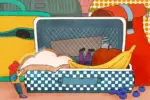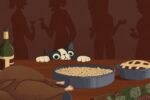Popular on apps like YouTube and TikTok, “What I Eat in a Day” videos showcase the types of foods that people consume in their day-to-day lives. Some people will only post one video showing what a typical day of eating looks like for them, while others make entire series of “What I Eat in a Day” videos, showing viewers how their diet fluctuates over time.
The videos also range in purpose: Some of them focus on what a person eats for weight loss or what they eat on a specific diet. There are many diets follwed by people who make “What I Eat in a Day” videos, but some of the most common include vegan, paleo and keto diets.
The wide array of diets shown during these videos can be helpful for individuals who are looking for recipe inspirations that fit their own dietary needs or restrictions. Taking meal inspiration from other people with busy schedules just like your own is sometimes more helpful than trying to cook complicated recipes from the Food Network. However, there are also hidden dangers that come from watching too many “What I Eat in a Day” videos.
For starters, a major issue with these videos is that most of the people who create them are not nutritionists or dietitians. In many cases, the YouTuber or TikToker making the video will disclose that fact at the beginning of their clip. However, sometimes people don’t bother providing viewers with that disclaimer.
When a person is only showing what they personally eat in a day, this isn’t as big of a deal. However, some individuals will create videos that directly encourage their viewers to start eating a certain type of diet.
Sure, people are allowed to produce whatever content they want, and that includes creating videos that give out diet advice even if they aren’t licensed dietitians. However, the fact that they don’t have training in the subject can mean that they are spreading misinformation that could actively harm a viewer who decides to follow the recommended diet.
An example of this occurring took place during 2016 on a sphere of the internet dubbed “Vegan YouTube.” That year, I went vegetarian and then vegan, and I began watching “What I Eat in a Day” videos from vegan YouTubers religiously. Some big names who were producing that type of content that year included Freelee the Banana Girl, High Carb Hannah and Kalel.
During this time period, these vegan YouTubers and other vegans were heavily pushing the high-carb, low-fat vegan diet. The purpose of the diet was to eat foods that were high in carbs but low in fat like beans, oats, rice, spaghetti, fruits and most vegetables. Foods that were higher in fat like avocados, peanut butter, olive oil and hummus were advised to be eaten in extremely low quantities.
I won’t spend this article arguing for or against the nutritional legitimacy of this diet; I simply want to note that this was the diet that was heavily pushed in “What I Eat in a Day” videos at the time. When I went to those videos for guidance on vegan meals to cook myself, I was hit with propaganda for the high-carb low-fat diet. I was young and at the time I thought that the only way I could be healthy was to cut out some of my favorite foods like avocados and peanut butter, and I developed a fear of adding oils to any of my food.
This was not healthy for me, and it negatively affected my relationship with food, which I’m still trying to fix five years later. I was a student athlete, trying to subsist on low-calorie yet high-carb foods, when foods with healthy fats would’ve been much more satiating and enjoyable. I was impressionable, and that’s why I experienced the hidden dangers of watching too many “What I Eat in a Day” videos.
Everyone has different dietary needs to live a healthy and happy lifestyle. Some people need to consume more calories than others because they might exercise frequently or have a higher body weight. Some people naturally have faster metabolisms than other individuals, and can therefore eat more than someone else. Some people struggle to gain weight while others have more trouble losing weight.
In any case, it all comes down to one thing: Everyone needs to eat a diet specific to their own personal needs. So while “What I Eat in a Day” videos can be useful for gathering recipe inspiration, do not use them as a guideline for what you specifically should eat in a day.
Following someone else’s meal plan when your body needs more calories than they do can be problematic and dangerous. Undereating and not providing your body with enough nutrients like iron, magnesium, B-12 or calcium can cause health problems. Some of the problems may be minor and only cause headaches or lethargy, while other nutrient deficiencies can lead to anemia and other serious ailments.
“What I Eat in a Day” videos can be fun to watch, but unless they’re from registered nutritionists or dietitians, do not go to them for dietary advice. There’s a chance that taking misguided dietary advice will negatively impact your health. Plus, if you’re anything like I was when I was younger, watching videos that demonize certain foods can lead to an unhealthy relationship with your meals.
If you decide to continue watching “What I Eat in a Day” videos, proceed with caution. Never follow someone else’s meal plan exactly, because your dietary needs will be different from theirs. Remain aware and skeptical while you watch these videos, and please don’t wreck your body in the name of chasing health. It’s something too many people have already done.

















